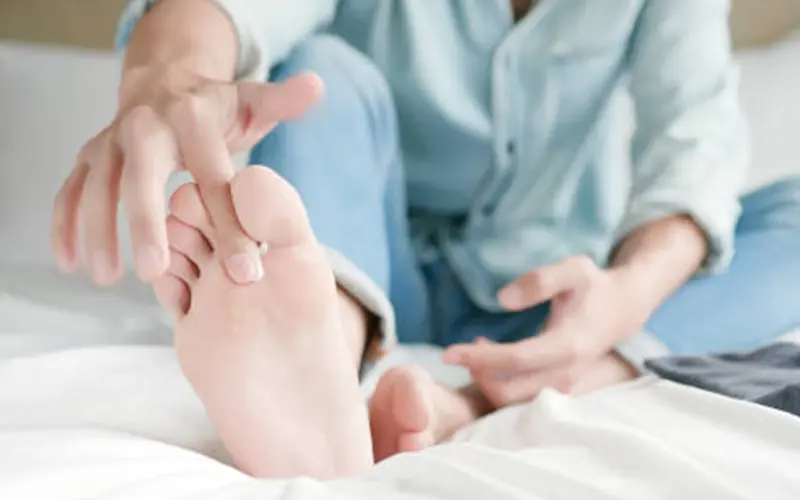Athlete’s Foot

Various foot conditions can benefit from a little home care, but it’s important to know when to make an appointment to see a trained foot and ankle specialist for professional treatment. A prime example of this is athlete’s foot. This common fungal infection has irritating symptoms, but the good news is that treatment is very effective. Even better, this condition can often be prevented with some easy measures.
Athlete’s Foot Causes:
Athlete’s foot is a condition caused by a fungal infection. The fungus is easily transferred to a human foot either via contact with a contaminated surface or an infected individual. The responsible microorganisms are frequently found in warm and damp environments—indoor pool decks, locker room floors, communal showering areas, and even human feet— or living on materials that made contact with them. Towels, socks, and shoes are often contaminated by an individual who has this fungal infection.
Athlete’s Foot Symptoms:
The major symptom associated with athlete’s foot is an itching, burning sensation. Most cases are also accompanied by a red, scaly rash. These symptoms typically are initially experienced between the toes, then spread across other areas of the foot. Additional symptoms to look for include blisters, chronic dryness, and even ulcers, all of which are more commonly seen in severe infections.
The infection can be easily mistaken for eczema or dry skin, because of similar symptoms between these conditions. For a definitive answer as to what is causing your burning, itching sensations, be sure to schedule an appointment with Upperline Health’s athlete’s foot specialists and we will provide a professional diagnosis.
Risk Factors:
Since athlete’s foot is a very common infection caused by a highly-contagious fungus, anyone has the potential risk of contracting it. The condition, however, does tend to appear more frequently in men than women. In addition to gender, other risk factors include:
- A weakened immune system with an impaired ability to fight off the fungal infection.
- Frequently walking barefoot in gym shower areas and locker rooms, or on indoor pool decks.
- Frequently wearing ill-fitting or tight shoes—particularly ones not made from materials that allow the feet to breathe—and wearing damp socks.
- Pedicures.
- Exposure to items—socks, shoes, rugs, mats, towels, and even bed linens—contaminated by an infected individual.
Treatment & Prevention:
Athlete’s foot can be rather irritating and even painful (in some severe cases). Many cases can effectively be treated by over-the-counter antifungal products (sprays, powders, ointments). When using these products, be sure to follow all of the instructions carefully. Symptoms might clear up before the infection is completely treated, so you may need to continue using the product for some time.
Whereas mild cases typically benefit from at-home athlete’s foot treatment, severe infections (or ones not responding to over-the-counter products) will likely need professional care.
Some of the best ways to prevent a case of athlete’s foot include:
- Keeping your feet dry. Completely dry your feet after a bath or shower before putting on your socks. Give special attention to making sure the areas between your toes are dry when doing so. Unless you have diabetes, walk barefoot at home to let your feet breathe. Also, change your socks if they become wet.
- Choosing the right footwear. Socks with moisture-wicking properties and shoes made out of breathable materials will promote dryness for your feet, thereby depriving fungus of the moisture it needs to survive.
- Using antifungal products. These are great for preventative treatment. Antifungal sprays or powder can be used daily in footwear and on feet to lower the risk of an infection.
- Protecting your feet. While in gym locker rooms or on a pool deck, wear shower shoes or sandals to keep your feet safe.
Many cases of athlete’s foot can be treated at home, but severe and stubborn infections might require professional treatment. When this is the case, schedule an appointment with Upperline Health and our medical staff will provide the effective care you need.

Contact one of our Upperline Health convenient clinics to get your Athlete’s Foot treatment started.
